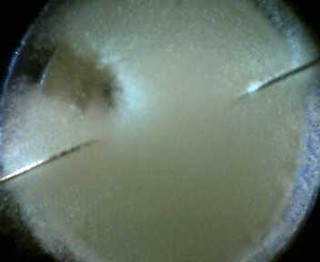For evenings, I use lights that don’t emit in the 400-550nm range (which affects the sleep cycle, particularly for babies and older people): http://ehp.niehs.nih.gov/119-a472/
So we use mostly amber LEDs (widely available as “turtle-safe” lighting, you know how to look this stuff up (grin)).
I also use color filter gels over ordinary light sources.
LEDMuseum is a wonderful resource (it’s one quirky guy on disability so contribute something if you find it useful; he’s been a reliable source on the Internet since before it got the wwws.
http://www.ledmuseum.candlepower.us/eighth/l15way25.gif (amber)
http://ledmuseum.candlepower.us/twenty1/sst-90.gif (emission spectrum for a “white” LED, mostly blue)
Remember “white” LEDs are, like “white” fluorescents, actually a blue-range emitter, under a fluorescent material.
That absorbs the high energy blue photons and emits somewhat lower energy photons.
The emission spectrum isn’t the same as the color temperature — a “warm white” LED has somewhat more emission at the warm end but still has a lot in the blue. The very newest warm white emitters are supposed to be using a green emission to drive the phosphor, and so be safer when used in museums on old paintings for example where the blue light degrades the material over time. NOVA | Saving the National Treasures | Fading Away | PBS
Here’s a white LED with a flaw in that fluorescent layer — see the blue-violet streak?
http://www.flickr.com/photos/wossname/3201800207/
here you can see the flaw in the phosphor:

So take that “white” emitter and overlay a filter gel of your choice
Click the little icon next to a filter, to see how much of each wavelength is transmitted by the filter, e.g.
For anything in the green-to-red range, filtering out the huge blue part of the emitted spectrum wastes all that energy.
Aside to all, I’m always interested in ways to change LED lights to amber emitters (remembering they use lower voltage than the “white” emitters). One way is to add a resistor but that wastes energy. Another way is to have a driver that measures the current flow through the LED and adjusts it — but it’s hard to find them documented. Pointers always welcome)

